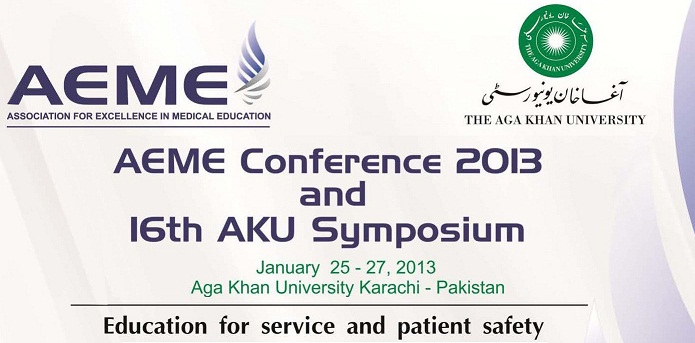Day 2 : Oral Presentations (Theme: Curriculum - Teaching & Learning)
Skills training of junior medical students: can peer-teaching be the solution?
Location
Lecture Hall 3
Start Date
27-1-2013 8:50 AM
Abstract
Introduction and background: The system-based curriculum of the medical college of Alzaeim Alazhari University (Sudan) entails early skills training for preclerckship students. Teaching the junior students by the clinical staff, increases demands on the trained clinical staff, and this cannot be solved by part time teachers, due to the poor financial incentives offered.
Aim and objectives: Our aim was to verify the feasibility of implementing a peer-teaching model for skills training of junior students and to establish whether peer-teaching can overcome the shortage of trained clinical staff, is accepted by junior students and helps solving the problem of skills training. Methodology Eight out of the sixteen selected and trained peer-tutors participated in teaching selected skills to the second- year students (no 144). All the three sessions were prepared , conducted and implemented by peer-tutors. The effectiveness of the experience was evaluated by an OSCE and two questionnaires.
Results: Learners received the peer-teaching favourably. The perception of the peer-teaching model by students was high and they recommended continuation of peer-teaching. The performance of the tutees was good to excellent. Peer-tutors also enjoyed and benefited from the intervention without affecting their learning.
Conclusion: Peer-teaching is effective and beneficial for both tutors and tutees, in resources limited- context. It can be used to solve the problem of skills training of the junior students, and be the solution of the shortage and increased demands on the trained clinical teachers. Key words: peer-teaching, junior medical students, skills training.
Skills training of junior medical students: can peer-teaching be the solution?
Lecture Hall 3
Introduction and background: The system-based curriculum of the medical college of Alzaeim Alazhari University (Sudan) entails early skills training for preclerckship students. Teaching the junior students by the clinical staff, increases demands on the trained clinical staff, and this cannot be solved by part time teachers, due to the poor financial incentives offered.
Aim and objectives: Our aim was to verify the feasibility of implementing a peer-teaching model for skills training of junior students and to establish whether peer-teaching can overcome the shortage of trained clinical staff, is accepted by junior students and helps solving the problem of skills training. Methodology Eight out of the sixteen selected and trained peer-tutors participated in teaching selected skills to the second- year students (no 144). All the three sessions were prepared , conducted and implemented by peer-tutors. The effectiveness of the experience was evaluated by an OSCE and two questionnaires.
Results: Learners received the peer-teaching favourably. The perception of the peer-teaching model by students was high and they recommended continuation of peer-teaching. The performance of the tutees was good to excellent. Peer-tutors also enjoyed and benefited from the intervention without affecting their learning.
Conclusion: Peer-teaching is effective and beneficial for both tutors and tutees, in resources limited- context. It can be used to solve the problem of skills training of the junior students, and be the solution of the shortage and increased demands on the trained clinical teachers. Key words: peer-teaching, junior medical students, skills training.

